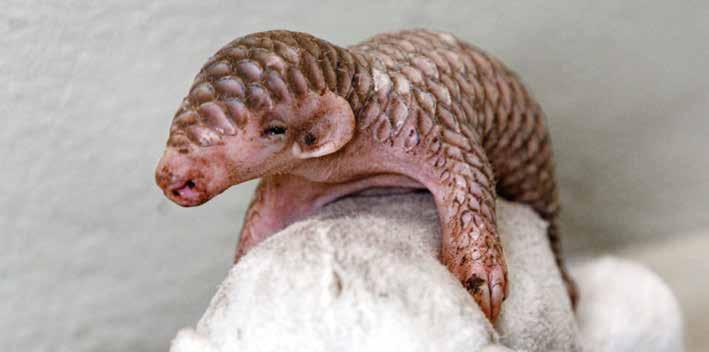
1 minute read
SPECIES SPOTLIGHT
The wonderful world of exotic animals
Viper gecko (Hemidactylus imbricatus)
Advertisement
Viper geckos are beautifully patterned geckos from North Pakistan. They inhabit arid locations and rarely exceed eight centimetres in length. Being such tiny animals, they are extremely fragile, so are best suited to enthusiasts looking for an animal to observe, rather than handle. They are the perfect candidate for arid bioactive enclosures. They can be housed communally, will not damage plants easily, are surprisingly active and will breed readily in captivity. These desirable traits may increase the popularity of viper geckos in the coming years as bioactive 'display-style' enclosures become more commonplace in the hobby.
A 60cm X 45cm X 45cm glass terrarium with a hot spot of 35°C is ideal for a trio of animals. Smaller vivaria would be suitable, as would a wooden vivarium. However, the keeper may find it easier to build an arid bioactive with appropriate temperature gradients in a larger, glass vivarium. Humidity should be kept below 50%, but occasional light misting is encouraged and a shallow water bowl should be provided.
Careful consideration should be given to the choice of décor. Lightweight items such as cork bark will reduce the risk of the animals being crushed by an object if they happen to burrow beneath it. Broad-leaved plants such as snake plants, aloe and spider plants make excellent refugia for viper geckos and will hold onto moisture, creating beneficial microclimates. Whilst viper geckos are mostly terrestrial, they will climb and utilise all space within the terrarium.
Cooling the geckos' enclosure by 5-10°C and feeding less often will mimic a winter period and prepare these animals for breeding the following year. The female will lay her eggs in soft sand after a 30-day gestation period. Hatchling viper geckos mature quickly and tend to reach adulthood within 10 months. Until this time, the keeper must be able to source a variety of small-bodied prey such as micro crickets and springtails. Adults can be fed a broad mix of suitably-sized insects preferably at night before the lizards become most active.







